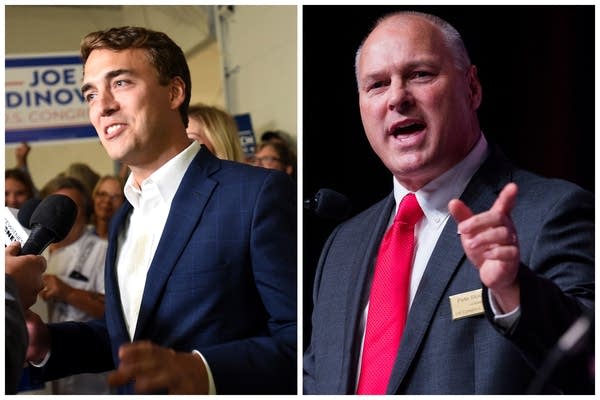All political eyes now on Minnesota's 8th District

Joe Radinovich, who won the DFL nomination in the 8th District, and Pete Stauber, who won the GOP nomination in the 8th District.
Steve Kohls | Brainerd Dispatch and Derek Montgomery for MPR News
Go Deeper.
Create an account or log in to save stories.
Like this?
Thanks for liking this story! We have added it to a list of your favorite stories.


